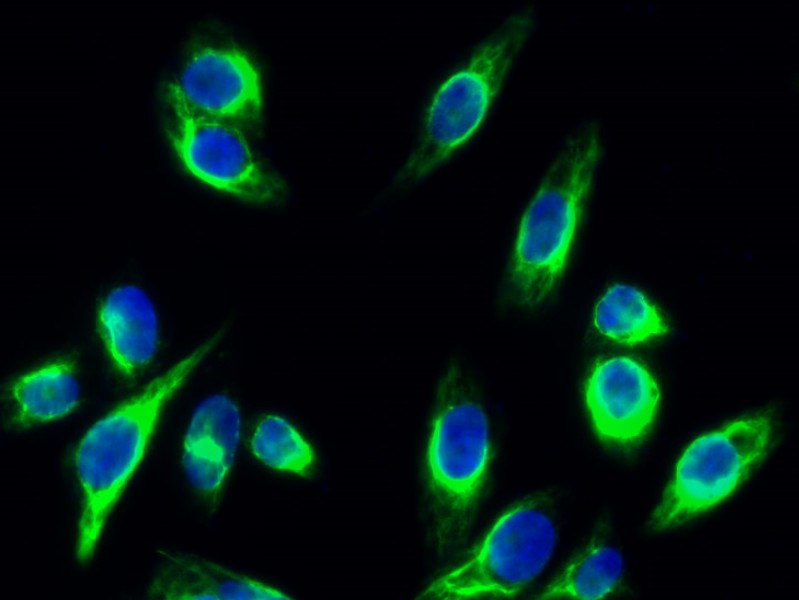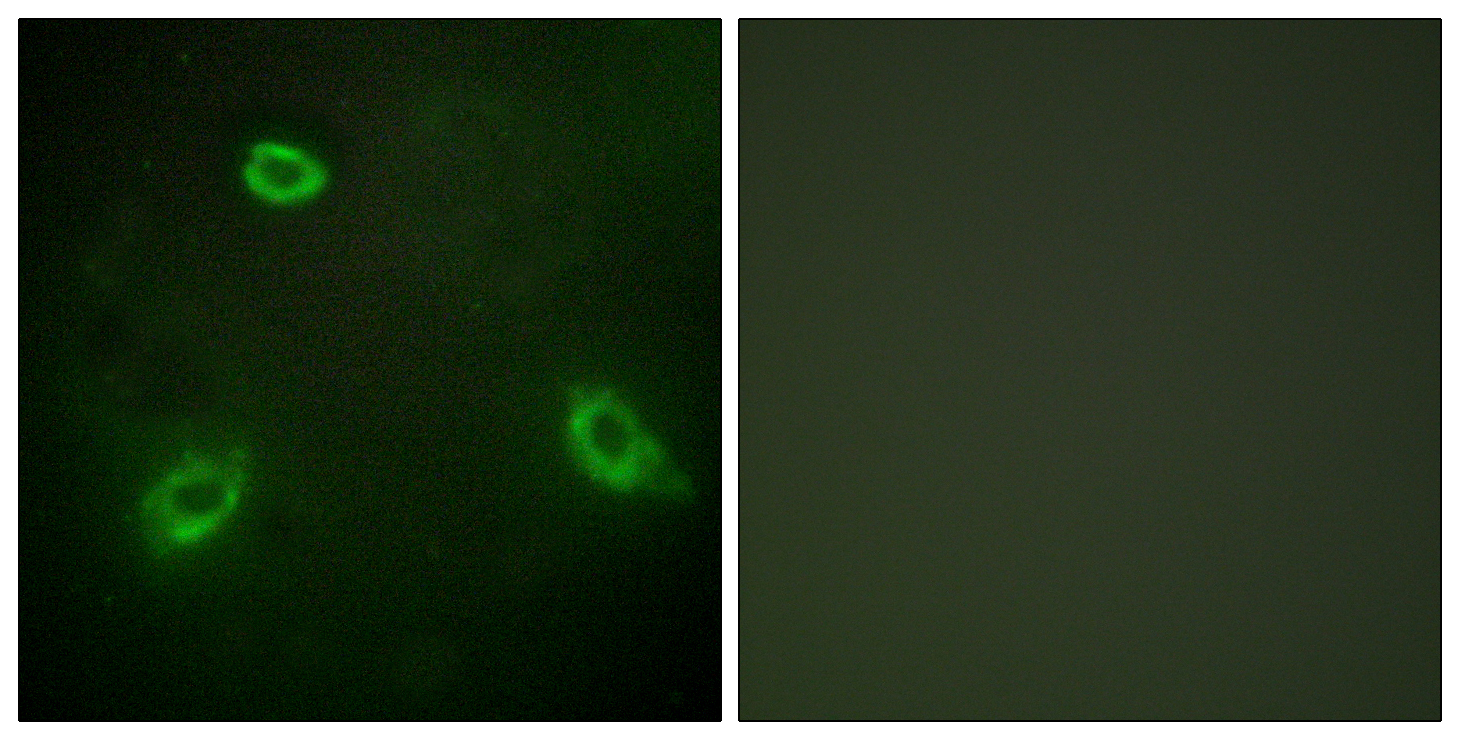NGEP Polyclonal Antibody
- Catalog No.:YT3113
- Applications:WB;IHC;IF;ELISA
- Reactivity:Human;Rat;Mouse;
- Target:
- NGEP
- Gene Name:
- ANO7
- Protein Name:
- Anoctamin-7
- Human Gene Id:
- 50636
- Human Swiss Prot No:
- Q6IWH7
- Mouse Swiss Prot No:
- Q14AT5
- Immunogen:
- The antiserum was produced against synthesized peptide derived from human TM16G. AA range:881-930
- Specificity:
- NGEP Polyclonal Antibody detects endogenous levels of NGEP protein.
- Formulation:
- Liquid in PBS containing 50% glycerol, 0.5% BSA and 0.02% sodium azide.
- Source:
- Polyclonal, Rabbit,IgG
- Dilution:
- WB 1:500 - 1:2000. IHC 1:100 - 1:300. IF 1:200 - 1:1000. ELISA: 1:20000. Not yet tested in other applications.
- Purification:
- The antibody was affinity-purified from rabbit antiserum by affinity-chromatography using epitope-specific immunogen.
- Concentration:
- 1 mg/ml
- Storage Stability:
- -15°C to -25°C/1 year(Do not lower than -25°C)
- Other Name:
- ANO7;NGEP;PCANAP5;TMEM16G;Anoctamin-7;Dresden transmembrane protein of the prostate;D-TMPP;IPCA-5;New gene expressed in prostate;Prostate cancer-associated protein 5;Transmembrane protein 16G
- Observed Band(KD):
- 105kD
- Background:
- This prostate-specific gene encodes a cytoplasmic protein, as well as a polytopic membrane protein which may serve as a target in prostate cancer diagnosis and immunotherapy. Alternative splicing results in multiple transcript variants encoding different isoforms. [provided by RefSeq, Aug 2011],
- Function:
- caution:It is uncertain whether Met-1 or Met-55 is the initiator.,function:May act as a calcium-activated chloride channel. May play a role in cell-cell interactions.,induction:Up-regulated by androgen.,similarity:Belongs to the anoctamin family.,subcellular location:Concentrates at sites of cell-cell contact.,tissue specificity:Specifically expressed in epithelial cells of the prostate (at protein level).,
- Subcellular Location:
- [Isoform 1]: Cell membrane ; Multi-pass membrane protein . Cell junction . Endoplasmic reticulum . Concentrates at sites of cell-cell contact (PubMed:17308099). Shows an intracellular localization according to PubMed:22075693 and PubMed:20056604. .; [Isoform 2]: Cytoplasm, cytosol .
- Expression:
- Specifically expressed in epithelial cells of the prostate (at protein level).
- June 19-2018
- WESTERN IMMUNOBLOTTING PROTOCOL
- June 19-2018
- IMMUNOHISTOCHEMISTRY-PARAFFIN PROTOCOL
- June 19-2018
- IMMUNOFLUORESCENCE PROTOCOL
- September 08-2020
- FLOW-CYTOMEYRT-PROTOCOL
- May 20-2022
- Cell-Based ELISA│解您多样本WB检测之困扰
- July 13-2018
- CELL-BASED-ELISA-PROTOCOL-FOR-ACETYL-PROTEIN
- July 13-2018
- CELL-BASED-ELISA-PROTOCOL-FOR-PHOSPHO-PROTEIN
- July 13-2018
- Antibody-FAQs
- Products Images

- Immunofluorescence analysis of Hela cell. 1,NGEP Polyclonal Antibody(green) was diluted at 1:200(4° overnight). 2, Goat Anti Rabbit Alexa Fluor 488 Catalog:RS3211 was diluted at 1:1000(room temperature, 50min). 3 DAPI(blue) 10min.

- Western Blot analysis of 3T3 cells using NGEP Polyclonal Antibody diluted at 1:1000

- Immunofluorescence analysis of HepG2 cells, using TM16G Antibody. The picture on the right is blocked with the synthesized peptide.

- Immunohistochemistry analysis of paraffin-embedded human prostate carcinoma tissue, using TM16G Antibody. The picture on the right is blocked with the synthesized peptide.



